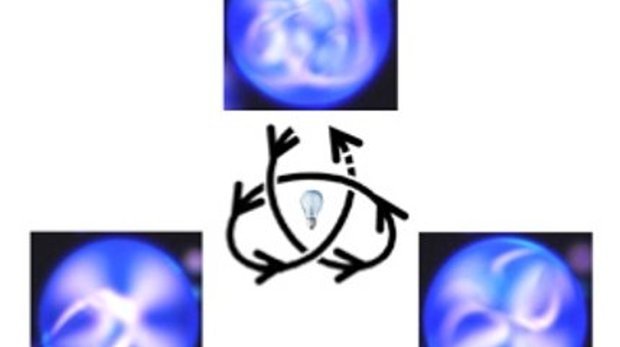24 August 2015
Nathalie Katsonis and her colleagues at UT Research Institute MESA+ have recently shown that light can create new structures in the form of liquid crystal droplets containing photosensitive molecular engines.
To date, these metastable structures had only be predicted theoretically, but had not yet been observed. These structures have various optical characteristics, and they are photo-switchable thanks to molecular engines, which marks a first step towards new forms of information storage. The research is financed by a VIDI grant of the Netherlands Organization for Chemical Scientific Research (NWO) and was recently published in the scientific magazine Nature Communications.
TOPOLOGICAL STATES
Topology is a universal concept which is used to describe matter. It can also be applied to our everyday lives: for instance, a cup without a handle is topologically equal to a ball, whereas a cup with a handle is topologically equal to a donut.
The possibility to check the topology of a matter is a first step towards new strategies in designing functional materials. It has recently been predicted through maths that liquid crystals can take a great variety of topological shapes, referred to as knotted loops orlinked loops. In the article published in Nature Communications, Katsonis and her colleagues of the Biomolecular NanoTechnology departmentare showing how topological knots or links can be created in the form of liquid crystal droplets. The number and geometry of these topological structures can be checked, since the photosensitive liquid crystals also have molecular engines. Under the influence of light, these molecules change between different isomers in different spiral shapes, and in that way the spiral twist, the chirality and the organization of the materials can be checked on a molecular level. These complex metastable structures can possibly be used for the development of optical media storage products with very large capacities.
Research
This work is embedded in the research line of Prof. Katsonis, that aims at designing bio-inspired and smart materials, with a special focus on responsive materials that can be controlled by using light. Thee experimental work has been carried out by Dr. Orlova and PhD student Aβhoff, and was performed in collaboration with the team of Etienne Brasselet, CNRS Bordeaux (France). The research was supported financially by an NWO Vidi grant and an ERC Starting Grant.
Source: Netherlands Organization for Scientific Research















